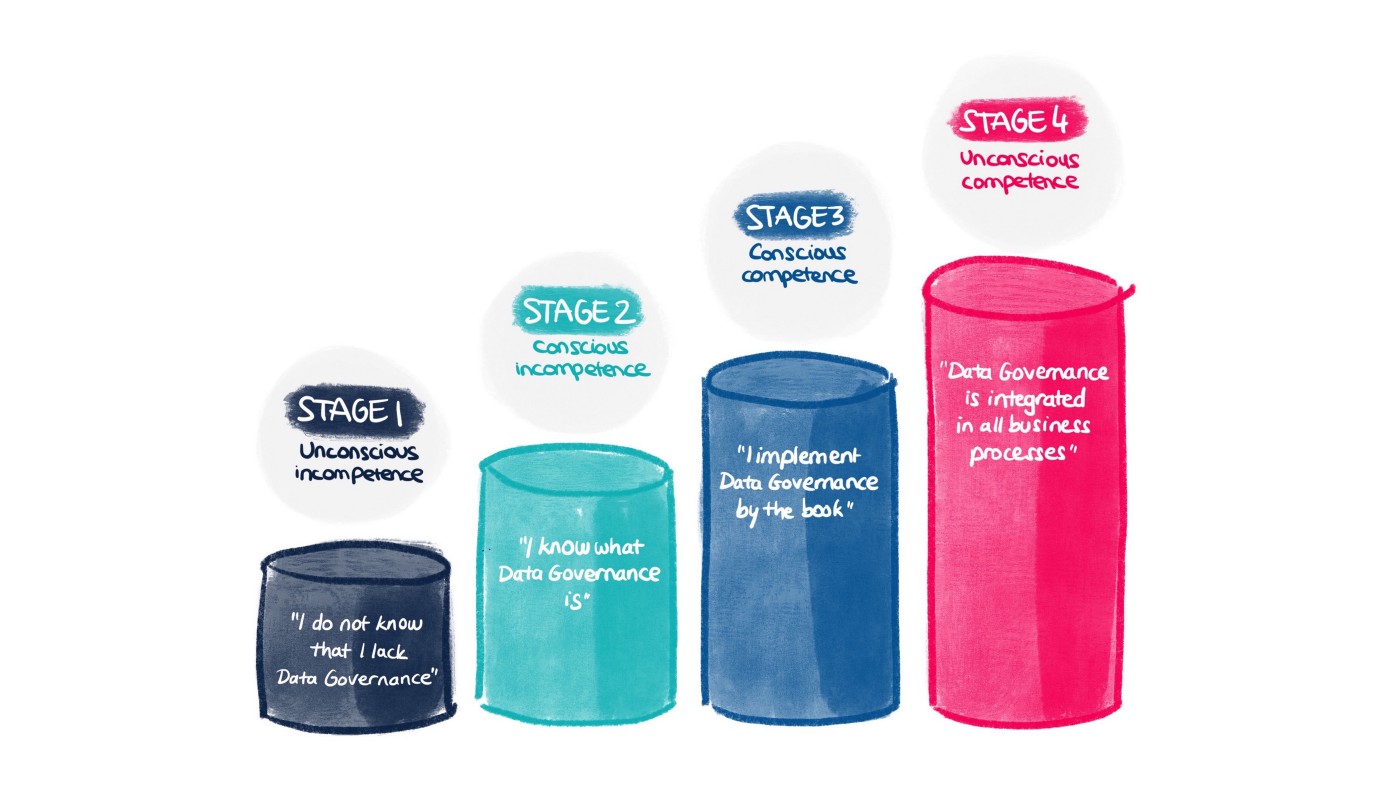Many theoretical articles have been written about data governance. At Artefact, we want to address this topic from an operational standpoint with our article series, “Insights from the field”, to give our readers pragmatic and actionable insights. The series will be composed of our observations and feedback on key data governance topics (e.g. operating models), answers to questions frequently asked by our clients and prospects (e.g. how to measure the impact of data governance), and interviews with key actors in data governance (e.g. Chief Data Officers, Chief Governance Officers, data custodians, software editors, etc.).
Tl;dr
Stage 1 — Unconscious incompetence: what are the “symptoms” of a lack of data governance?
- The company faces unresolved business questions due to poor data governance
- The company is forced into a corner by existing initiatives requiring mature data (strategic use case, IT migration etc)
- Dealing with these symptoms will help to become aware of the challenges and critical value of data governance
Stage 2 — Conscious incompetence: what are the challenges encountered by a company when starting a data governance journey?
- Proving that data governance is of value: raw data is untapped potential while refined data is gold
- Finding the right financial model to launch the first initiatives: driven by use cases or driven by a central transformation organ
- Mobilising people to deliver: within data governance federated teams, and beyond
Stage 3 — Conscious competence: what are the steps companies usually follow when launching a data governance programme?
- First step — Structuring data governance assets: domains, operating model, roadmap, tooling
- Second step — Deploying data governance within each data domain:data quality, standardisation and accessibility. Either through a complete renovation within a limited period thanks to major programmes ; or through the spread of the work over a long period, beginning with the most critical and doing the rest little by little
Stage 4 — Unconscious competence: what happens when data governance becomes the new normal?
- Data governance is no longer a journey but an accomplished skill
- Data governance is everyone’s responsibility: COMEX members, Business owners, Heads of Engineering, domain development teams, Data stewards, Use case and feature teams

Understanding what data governance is, why it is on the critical path to value and how to concretely deploy it in your organisation can be a long road. When companies first launched large transformation programmes with AI and data use cases, they quickly realised these programmes required key enablers such as data platforms, data lakes, data quality management and MDM, which allow quality data to be exposed to use cases. Only recently has data governance appeared as a priority with regard to the myriad of complex systems created.
Today, almost everyone in the CDO/CTO ecosystem understands that data governance is a prerequisite to AI transformation. They’re familiar with all the basic organisational and operational concepts, but setting them to music to deliver concrete value is a far more complex task. As a result, data governance is often reduced to isolated documentation initiatives with little impact. We see many programmes being launched, and many heads of data governance appearing in our clients’ organisations. At first, they all encountered the same difficulties in convincing their sponsors and business partners to invest in these activities. Why? Because deploying data governance is a complete learning process that the organisation has to go through, and each step along the path is important.
The purpose of this article is to help you understand what data governance is in practice by taking you on a journey through the data governance learning process each company inevitably experiences.
Stage 1 — Unconscious incompetence: What are the “symptoms” of a lack of data governance and what triggers it?
Even before starting the journey, the first challenge is to identify the data governance problem. At this stage, the company has not yet realised that many of its business problems are directly related to data governance activities. The first step of the journey is to determine which fundamental questions no one in the organisation is able to answer.
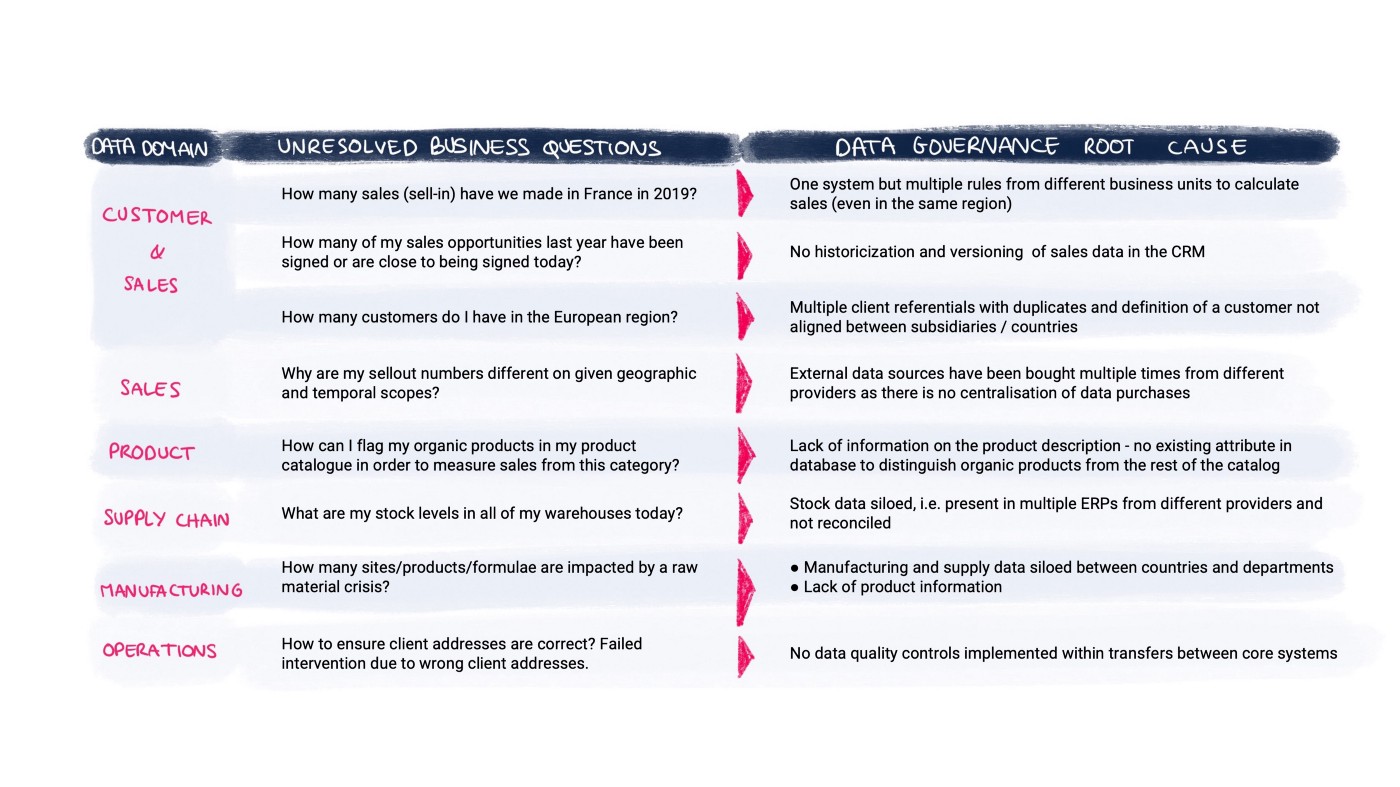
Asking this type of question connects data governance directly to the potential business value it can generate and avoids the pitfall of an IT or privacy-driven approach which reduces data governance to Master Data or Access Right Management.
In the field, we’ve observed other typical situations that trigger the launch of data governance initiatives:
To move forward on the data governance learning path, companies need to face unresolved business questions or be forced into a corner. Only then will they become aware of the challenges they are facing and understand the critical value of data governance.
Stage 2 — Conscious incompetence: What challenges do companies encounter when starting a data governance journey?
Once a company has decided to officially start its data governance journey, three main challenges arise: (1) Proving that data governance is of value, (2) Finding the right financial model to launch the first initiatives, and (3) Mobilising people to deliver.
1.Proving that data governance is of value: raw data is untapped potential while refined data is gold
One of the first challenges is to convince the Board. Data governance advocates need to find the right pitch to prove that, sometimes at the expense of use cases, investment should be made in data governance and space should be found on data transformation roadmaps.
[FROM THE FIELD #1] A data governance leader in the CPG industry organised a training camp with aspiring data owners (excom n-1), sponsored by the CEO and CFO. They presented the company’s data governance debt that needed to be addressed in order to realise faster data transformation gains (i.e. unresolved business questions from each department, and difficulty of delivering strategic COMEX use cases due to bad data quality or accessibility).
[FROM THE FIELD #2] To convince management, data governance leaders from a telco player developed a business case with three types of revenue sources:
> Missing revenue (e.g. inhibited revenue due to missing or poor quality addresses in ordering systems)
> Savings (e.g. rent or subscriptions paid for technical or commercial sites no longer in use)
> Operational efficiency gains in the data team (e.g. estimated number of FTEs saved on data quality issues).
2. Finding the right financial model: driven by use cases or driven by a central transformation organ
Two questions frequently come in from the field: How much does it cost to launch a data governance programme? Who should pay for it? Two models can be distinguished:
Model 1 is the target for post-transformation, when data governance is embedded in all projects by design. Before and during transformation, model 2 generally applies to establishing best practices.
[FROM THE FIELD #3] The CFO of a large CPG industry, convinced of the value of data governance for business, created a central data governance office under his mandate and provided it with a central budget. The estimated budget was around 15M€. Another organisation chose a two-step strategy: for the first few years of transformation, they budgeted 2M€ per year for data governance in the hands of the data governance office, but they plan to acculturate the company step by step and switch to model 1.
3. Mobilizing people to deliver: within data governance federated teams, and beyond
Mobilising people in your company around data governance issues is THE key challenge.
Within data governance teams, the key success factor is to implement a federated delivery model, in which operations are decentralised and driven by each business domain team. A central office or lead (depending on the size) is responsible for structuring the programme, implementing the toolbox, defining the standards. Its first mission is to segment the company’s data into data domains and appoint an owner for each domain, who will be responsible for appointing key roles in their domain (stewards, custodian…).
Beyond data governance teams, the central office must acculturate and upskil teams, to accompany the new, more structured ways of interacting with data.
[FROM THE FIELD #4]
> At C-level: a major CPG player organised several sessions with the COMEX in order to raise awareness of data governance issues among its members.
> At use case level: another CPG player trains all its Product Owners and Data Scientists to deploy data governance by design within AI and data use cases (development of data quality checks, data lineage within Collibra etc.).
>> At domain level: a telco company formalises training for data steward and owner onboarding (how-to, tools, etc).
> At company level: one company launches awareness actions for all to spread their data excellence culture.
Once these initial challenges have been overcome, the organisation can be considered competent and mature enough to define the best approaches to get started and achieve the first tangible results without too much upfront investment.
Stage 3 — Conscious competence: What are the steps to follow when launching a data governance programme?
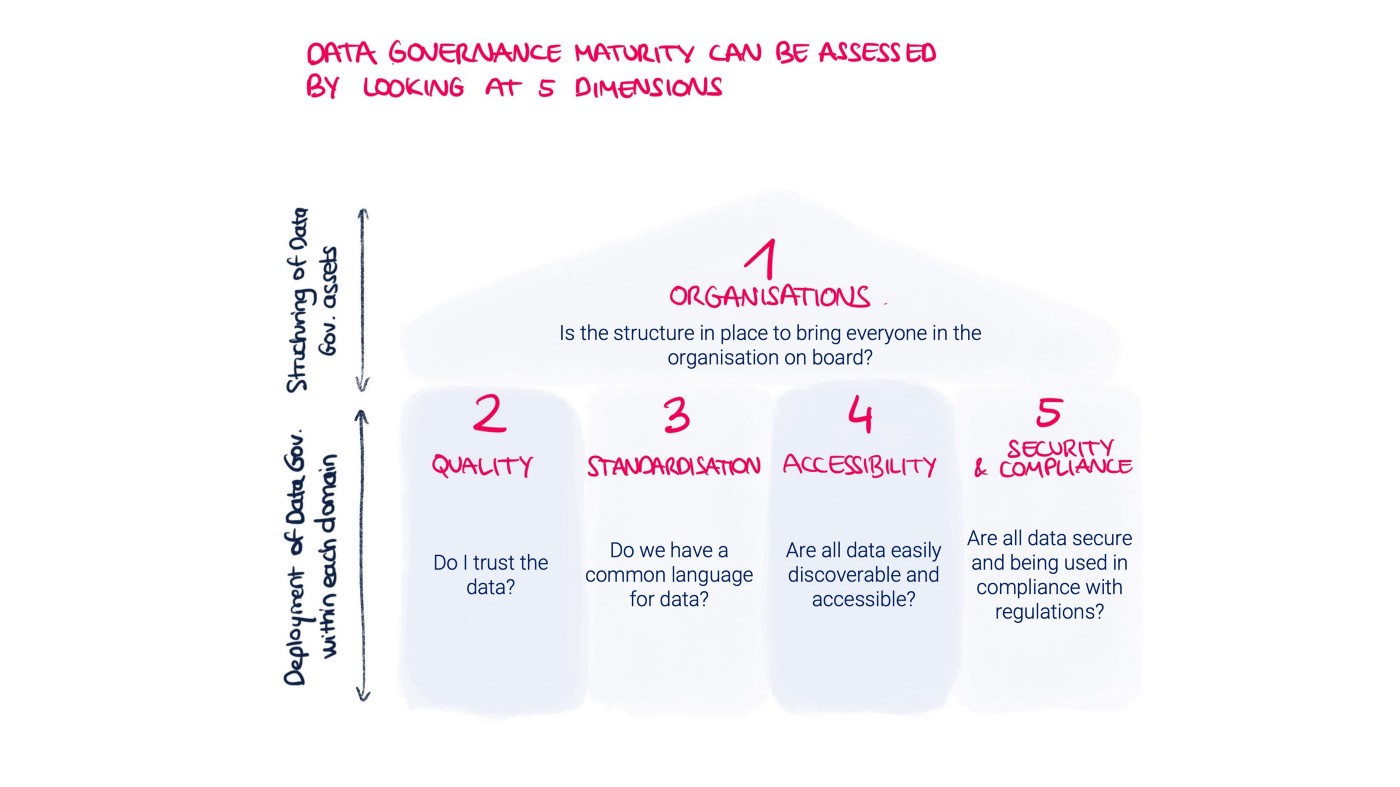
1.Step 1 — Structuring data governance assets: domains, operating model, roadmap, tooling
One of the first key activities of the data governance office is the structuring of data assets into data domains. This activity enables the company to:
Once the exercise is completed, the next step is to assign owners (they will prioritise activities and fix objectives) and stewards (they will operationally deploy quality and documentation routines) to each domain. We’ve observed that successful data governance models are “federated” models, with operational activities decentralised in domains and a head of data governance in a central data team to drive momentum,coordinate activities and empower stewards and owners.
Mature organisations are business-driven and build their data governance roadmap in close relationship to their data use cases roadmap. They map data domains with the company’s strategic use cases and prioritise domains which serve many use cases. One critical success factor is to start small and avoid the tunnel effect by identifying two or three critical domains with motivated owners and stewards, and to refine the methodology before deploying it in other domains.
Tools are important to sustain data governance in the long run, but data governance is above all an organisational issue. If the organisation is not convinced of the importance of data governance, and if the operating model is not in place, the tools will not be adopted and will be a waste of resources and time for the company.
[FROM THE FIELD #5] For example, the IT department of a large CAC 40 company set up a contract with Collibra without considering the operating model needed to sustain the deployment of such an initiative. They adopted an IT-driven approach by screening all databases to document table data schemes. Data stewards weren’t in place to add the business layer on top of the table scheme. Usage of the tool was reduced to a few IT players and ROI wasn’t demonstrated. Two years later, the data team decided to relaunch a business-driven initiative with Collibra, this time prioritising a roadmap based on the strategic use cases they wanted to deliver and creating a Collibra community around the tool to boost usage. The tool has shifted from a simple documentation tool to a data intelligence one, embedded into key data processes, and is now widely used by data scientists for data discovery.
2.Step 2 — Deploying data governance within each data domain:data quality, standardisation and accessibility
Approach 1 — Complete renovation within a limited period with major programmes
Approach 1 is usually preferred by large companies which have launched major transformation programs and are facing important problems in successfully delivering their data and AI cases. It’s also the case of companies which are currently moving to the cloud and for whom the structuring of their data assets within a new data platform is at stake. This holistic or end-to-end approach is designed to clean up a data domain from floor to ceiling by working on the four dimensions of data governance: quality, standardisation, accessibility and ownership.
[FROM THE FIELD #6] To explain the methodology, let’s use the example of a CPG company which launched a major data transformation programme. The company took advantage of the move to cloud to clean their data and restructure their data assets into 18 data domains, easily discoverable and accessible by end users, with the objective of delivering high value AI use cases. After setting up a data governance office to coordinate the initiative, they deployed a comprehensive methodology to assess data maturity, define data domain taxonomies, and develop new data models on the Google Cloud platform, re-usable for many use cases.
A key aspect of such a major data transformation programme is the ability to coordinate efforts on 18 data domains. The data governance office plays a crucial role in ensuring consistency and setting overall priorities between data domains.
Approach 2 — Spread of the work over a long period, beginning with the most critical and doing the rest little by little
Approach two is more suitable for companies that need to prove data governance value before launching major programmes. At first, these companies focus on one specific pain point they want to resolve with data governance. Sometimes these initiatives aren’t even flagged as “data governance”.
[FROM THE FIELD #7] Some examples of pragmatic data governance initiatives:
“Source-driven” approach: A pharmaceutical company launched a CRM data harmonisation initiative to address the problem of limited quality and harmonisation of data captured by their sales representatives across affiliates. This initiative was triggered by complaints from the central marketing teams, who were unable to effect comparisons between affiliates or have visibility on overall performance (example: six different ways to designate a cardiologist in Veeva).
“Dashboard-driven” approach: a utility company leveraged the Collibra Catalog to explain how the KPIs of its COMEX dashboard were calculated and to align the entire organisation on how to compute these strategic KPIs.
“Access Management” approach: in the context of a move to cloud, one of our clients relaunched its data governance initiative which had failed two years prior by defining the level of accessibility of data within their new cloud platform.
“Use case-driven” approach: one major CPG player decided to standardise its sell out data to respond to the needs of a very critical demand planning use case. They identified the data objects needed to realise the use cases, selected and qualified the data sources, and standardised their data to build a single data model they used to develop any use case that will require this data.
“Quality-driven” approach: one of our clients implemented a quality assessment and remediation process to identify key data quality pain points, prioritise them in a data quality committee and track the resolution of the problems with the technical teams.
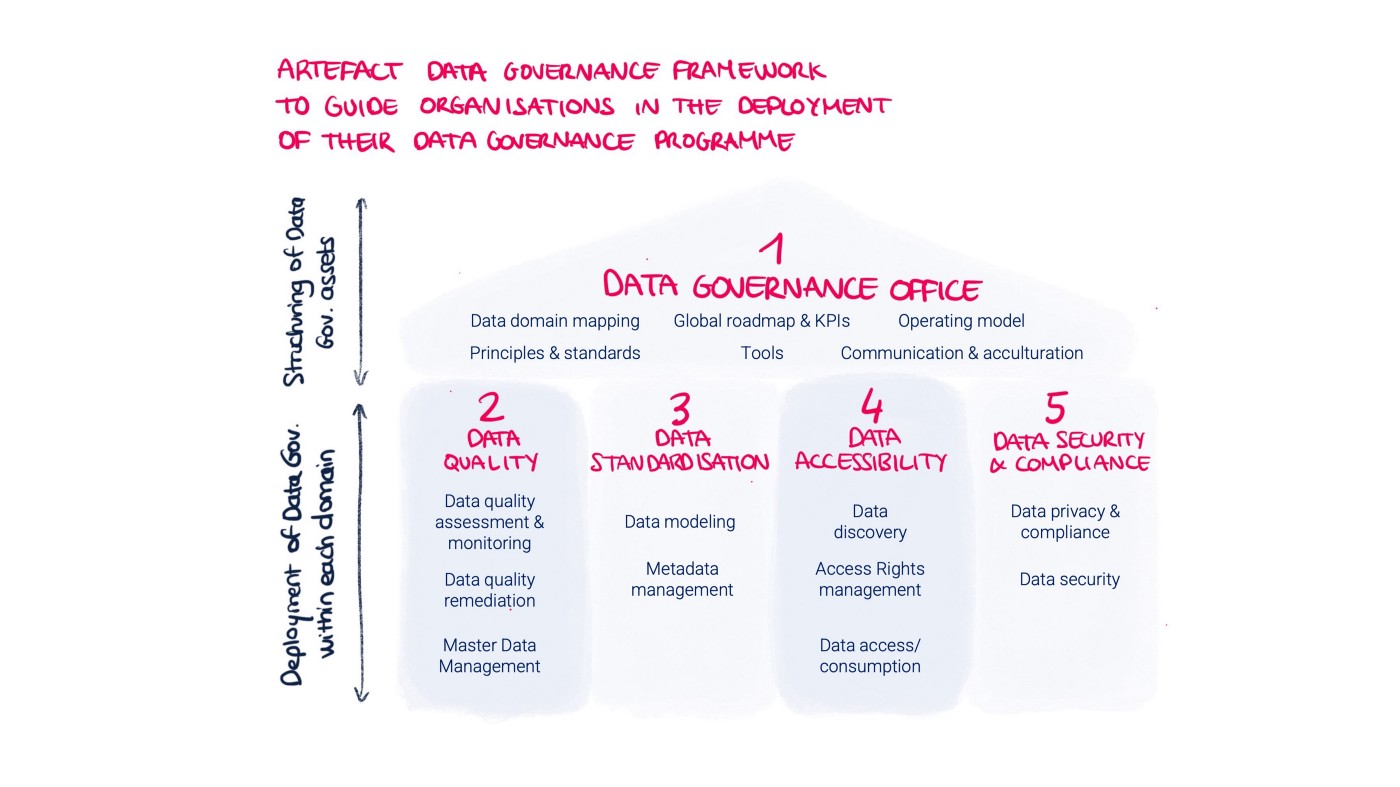
Stage 4 — Unconscious competence: What happens when data governance becomes the new normal?
Before we begin, it’s important to stress that apart from pure players or the newest companies that were designed around data, relatively few companies have reached this last stage, when data governance has become automatic.
1.Data governance is no longer a journey but an accomplished skill
Data governance is no longer seen as a time-consuming transformation journey that requires great effort from stakeholders. It is now a skill fully embedded in the company’s process and everyone working with data is impacted at its level.
2. Data governance is everyone’s responsibility
COMEX members facilitate the circulation of data within the company. They rely on a unified view of data (single source of truth) to take all strategic decisions and monitor company performance.
Business owners recognise that data governance is a key success factor for their business transformation. Each business initiative includes a data governance component “by design”.
Heads of Engineering are the leads of a domain-oriented data platform. They are in charge of building the common functionalities of the platform, and of setting global standards to ensure interoperability between domains. The responsibility of delivering high quality data products to use case teams is decentralised in those domain development teamsclosest to the data.
To make sure data products are qualitative, domain development teams rely onData stewards to guarantee a high level of data quality and availability. Data steward is not a role, it’s a full time job at the crossroads between business, IT and data teams. They coordinate the effort to catch up on data governance debt and make sure new services are governed “by design”.
Use case and feature teams that consume the data are treated as customers with rights and duties:
Conclusion
Although the majority of actors today still hover between the second and third stages, they all feel the business urgency to move forward in this learning process.
3 main arguments justify this urgency. First, data / AI transformation is a key lever to achieve ambitious goals of new growth drivers and to remain on the cutting edge, and data transformation isn’t sustainable without data governance. Second, we’re in a fast-moving world, where obtaining speedy access to data and rapidly analysing and exploiting it is essential to react quickly. And finally, companies need to attract new talents who are increasingly willing to be data-driven.
One of the first challenges for any company at the beginning of its data governance journey is to demonstrate this urgency and convince internal stakeholders of the value of concretely launching a data governance programme.
Contributors: Big thanks to Justine Nerce, Killian Gaumont, Violaine Berland, Sophie Xu, Alexandra Coillard, Marc-Antoine Paing – Artefact

 BLOG
BLOG